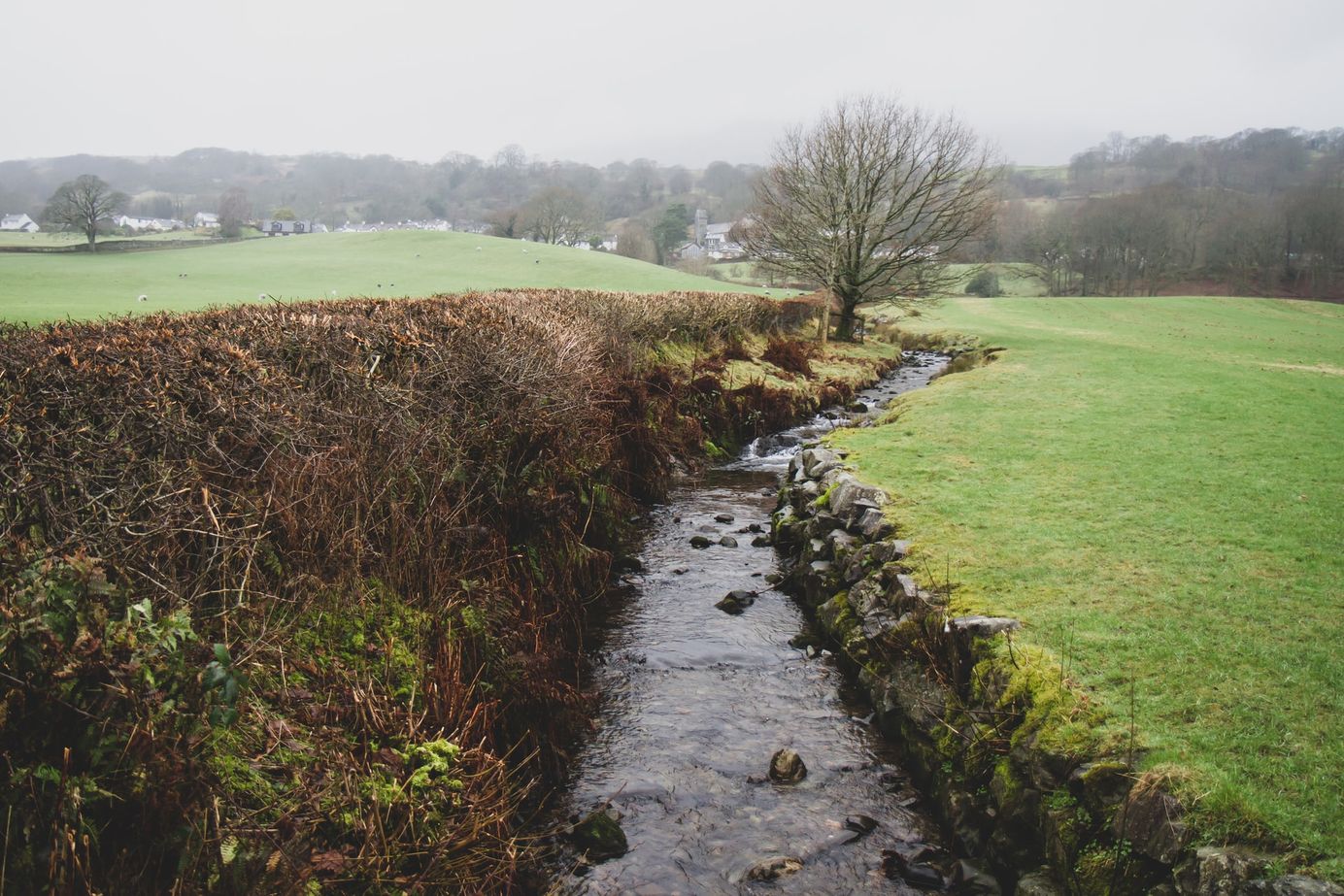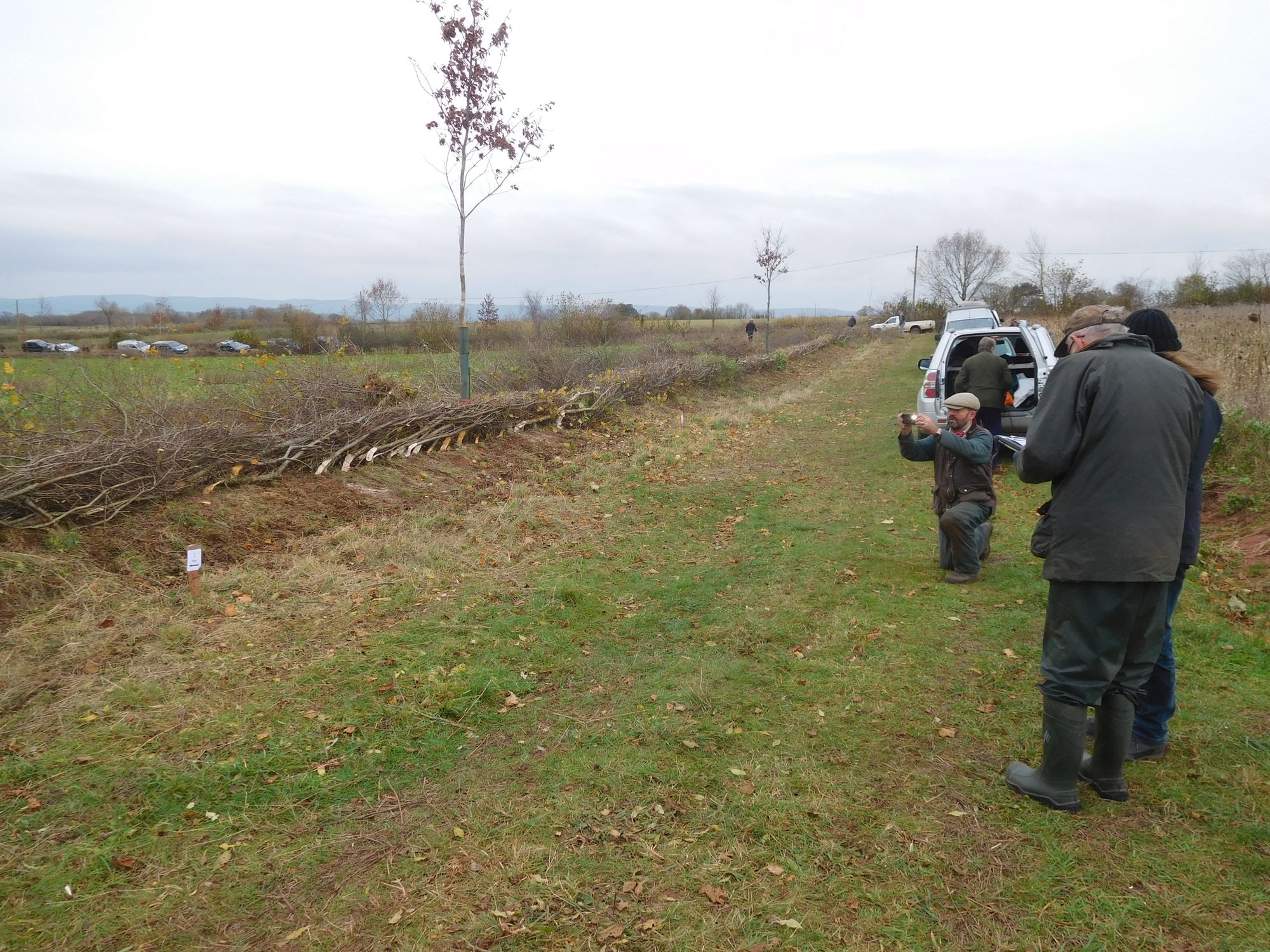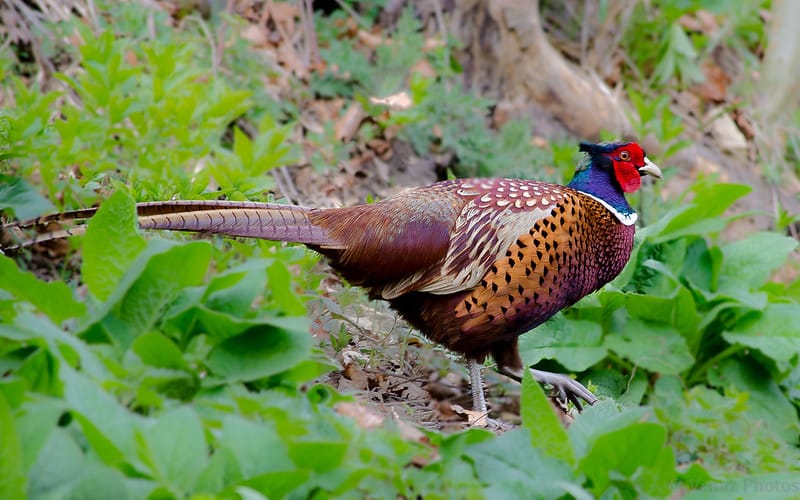
Can hedgelaying survive the 21st century?
People have laid hedges since the Bronze Age – but fresh thinking is required to ensure the craft continues into the future.
Next weekend, on an estate in Hampshire, the rockstars of the hedgelaying world will gather to compete in the National Hedgelaying Championships.
Reaching this stage is the mark of a true craftsman. Here, hedgelaying ascends into high art: it not just about creating a barrier to keep out a few sheep, although that’s certainly part of it. Judges will look for attention to detail, and evidence that the competitors have mastered their regional style. The stakes are high: the Supreme Champion will receive £200, a neck tie and a copy of Europe’s Field Boundaries.
These competitions are more than an annual display of talent: they are helping to keep hedgelaying alive – and, by association, the biodiversity of the countryside.
Hedgerows act as green corridors running through often nature-depleted agricultural landscapes, providing food and habitats for creatures like dormice, hedgehogs, butterflies and birds; a recent study identified as many as 2,070 species in one hedge. The practice can be traced back to the Bronze Age, with early farmers using them to mark boundaries between their crops; today, these networks are helping to tackle the more modern problem of climate change by storing carbon and reducing the impacts of flooding.
Despite their benefits, hedgerows are on the wane. The UK has lost half its hedges since World War II, most of them ripped up by farmers who were incentivized to create larger fields housing more crops. Those that remain are faring badly. Hedgerows require careful management; both over-trimming and under-trimming can harm their structure and diversity.
Hedgelaying is cold, remote and expensive work – and often goes unappreciated by farmers who have decided that a fence will do the job just as well. It's not an easy career, and simply by creating a bright point in the calendar, hedgelaying competitions are helping the craft, and the craftspeople, to thrive.
“Some people go to a conference; hedgelayers go to a competition,” says Tom Hynes of the Devon Hedge Group. “The last competition I entered was the Somerset competition. It was very hard work to get your section finished in the day – but great fun.”

Competitions are also the ultimate networking opportunity. “Anyone who’s looking for a contractor can turn up at a competition, chat with people, take away their cards,” Hynes adds. They are also crucial in passing on the skills to younger generations. At the Nationals this year, there are special awards for the Best Under 21 and the Best Young Farmer (and also, in a sign of the gender balance of the occupation, for Best Lady Competitor).
Competitions alone won’t save the art of hedgelaying, but there are plenty of people considering ways to ensure the craft survives the 21st century. Farmers, once so keen to strip their land of hedges, are now hoping for the opportunities to put them back. The National Farmers Union, in a document on reducing agricultural emissions to net-zero by 2040, claimed that better hedgerows could deliver carbon savings of up to 0.5 megatonnes of CO2e per year.
The ultimate hurdle remains the cost: a metre of hedgerow costs around £10-12 per metre. Hedgelayers get work from two sources: wealthy landowners with a penchant for nature and tradition, or farmers in receipt of grants.
“It’s quite a lot for farmers to shell out, if they’re not getting a handout,” says Andrew Kirkwood, who’s been laying hedges in Cumbria for around 40 years.
Luckily, the government is starting to realise the environmental value of hedges; environment minister Victoria Prentis branded them both “sexy and important” during a recent discussion with the Church of England. This enthusiasm is translating into greater funding: under the government’s new Sustainable Farming Incentive pilot scheme, farmers will be paid up to £24 per year for maintaining a 100-metre hedgerow.
But if hedgelaying is to survive in the long-term, and is to avoid shackling itself to the whims of government grant schemes, then the cost of hedgelaying itself needs to come down. This might mean – whisper it quietly – moving away from regional styles, cutting some corners, and adopting modern machinery.
“It’s controversial, and I think there are purists who would say that this is not good,” says Hynes. “But the Devon Hedge Group has discussed this, and we have a mixture of contractors, purists and non-purists, and all of us generally agree there are ways of making hedgelaying quicker and easier – possibly less fun, but also on a wet day, you’ll stay a bit drier.”
This doesn’t mean letting regional styles die out completely, he stresses – hedgelaying competitions will ensure there’s always a place for that kind of craftsmanship – but perhaps leaving the artisan approach to paths and roadsides, where the hedge will be displayed in all its glory, while adopting a more rough-and-ready style where there are fewer passers-by.
Nigel Adams, a hedgelayer and consultant, has developed his own style, eschewing the traditional stakes and binders but that nonetheless produces a thick, leafy boundary. He’s thinking ahead: the production of the wooden rods – typically cut from hazel, chestnut or willow – that hold the hedges together is also a dying craft. “A lot of the old boys are passing away, and not many people are taking up that career in the woods,” he says.
Meanwhile, Paul Lamb, a hedgelayer in the southwest, has embraced social media. On Instagram, where he is known as @westcountry_hedgelayer, his shots of artfully twisting hedges and rural life have earned him over 8,500 followers. He is now able to earn a living from hedgelaying for the entire season, spanning from October to March.
“Hedgelaying, charcoal burning and all those old ways that are beneficial for the countryside had become irrelevant and were lost for a generation – but there's no doubt that there's a renewed interest in them. I'm optimistic,” he says.
Another way to help hedgerows pay for themselves is through byproducts. The dead wood removed during the trimming and coppicing cycles need not go to waste, says Megan Gimber, who advocates for better hedgerows at the People’s Trust for Endangered Species.
“If there was a way of easily and efficiently turning it into a product – whether it be woodchip for mulching, biochar for soil conditioning or a sustainable sort of wood fuel source – brash can have benefits again,” she explains.
Given the rising demand and society’s newfound enthusiasm for hedges, the hedgelaying community is beginning to reckon with another looming dilemma: what if there aren’t enough young people willing to inherit the craft? CPRE, a charity devoted to the countryside, is calling for a 40% increase to the UK’s hedgerow network by 2050, which it claims would support 25,000 full-time equivalent jobs. Where will all these hedgelayers come from?
The National Hedgelaying Society has recently overhauled its hedgelaying accreditation scheme, and will launch the programme at the championships next weekend. Lamb has also started running courses – though anyone wanting to participate would have to be quick: the 24 slots for his recent offering sold out within a day. The desire to preserve this ancient craft appears deep-rooted.
In a world where wilder is often seen as better, the preservation of hedgerows also offers a niche for those who are nonetheless attached to the culture and aesthetic of the traditional rural landscape – but who nonetheless want to see it returned to the berry-heavy, blossom-bursting, bird-fluttering landscape that it once was. A place that’s orderly, but not too orderly.
“It just kind of goes with my character,” says Hynes. “Changing something that’s a mess and overgrown into something that’s neat and tidy.”
Subscribe to our newsletter
Members receive our premium weekly digest of nature news from across Britain.
Comments
Sign in or become a Inkcap Journal member to join the conversation.
Just enter your email below to get a log in link.









